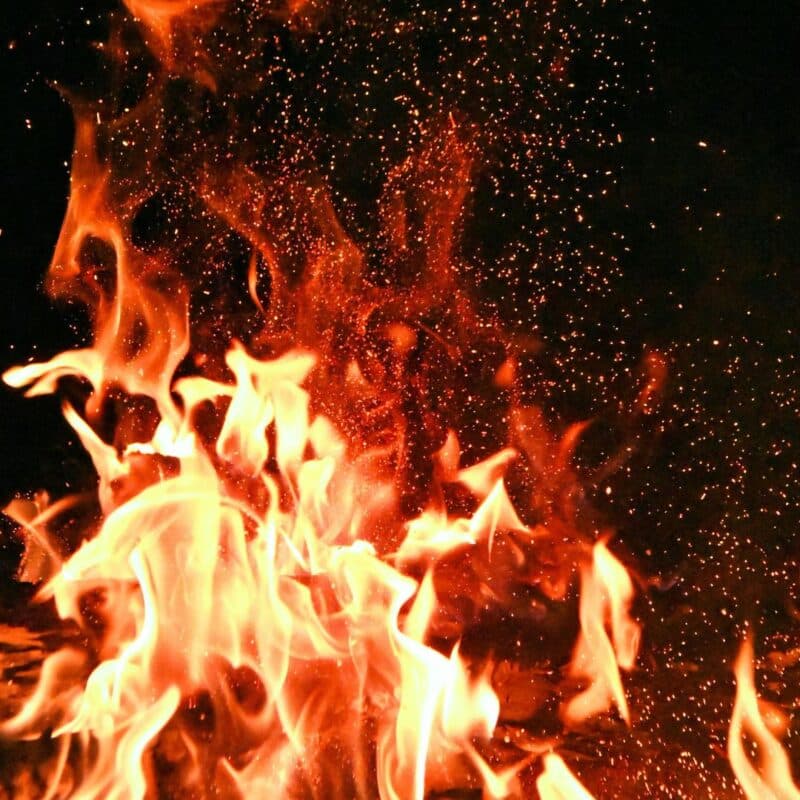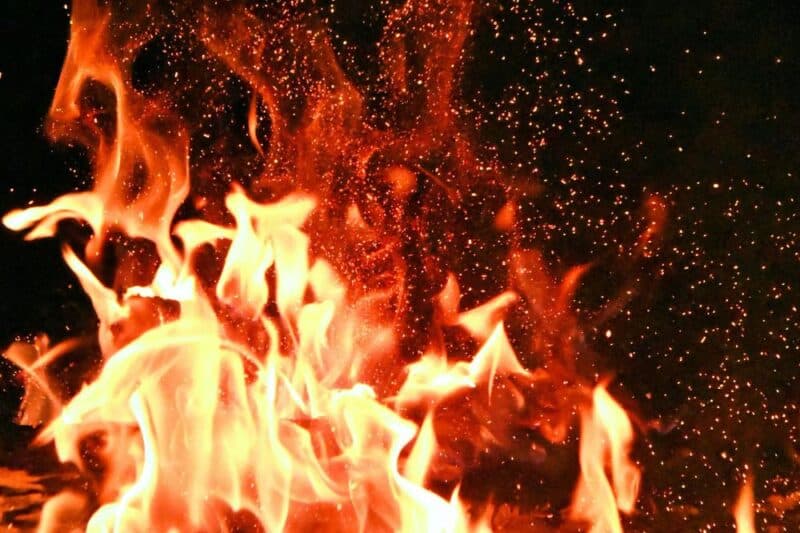A fast-moving wildfire erupted on Tuesday, April 22nd, 2025, in Ocean County, New Jersey, rapidly expanding to over 11,500 acres within a day. Mandatory evacuation orders were in effect in the areas of Ocean, Lacey, and Barnegat townships as Lieutenant Governor Tanesha Way declared a State of Emergency. As situations like these develop, it remains crucial for residents to stay informed about safety measures, evacuation routes, and available resources. Please bookmark this page for future reference, and read on for wildfire resources at the Jersey Shore.

Latest Updates on the Jones Road Wildfire
As of 5:30PM on Thursday, April 24th, the 15,200-acre Jones Road Wildfire is currently 50% contained, per the New Jersey Forest Fire Service on X. NJ-based businesses Eat Clean Bro and Caliber Construction are providing meals to to first responders battling the wildfire.
Per the Ocean County Prosecutor’s Office, 19-year-old Ocean Township resident Joseph Kling was arrested and charged with aggravated arson and arson in connection with the wildfire. An improperly extinguished bonfire was found to be the cause, with further investigation revealing that Kling was the individual responsible for setting wooden pallets on fire and then leaving the area without the fire being fully extinguished.
Wildfires at the Jersey Shore
At the Jersey Shore, several towns and areas are at a higher risk for wildfires due to the presence of forests, dense vegetation, and dry conditions, particularly from mid-March through May. During this period, trees and underbrush are still in the process of leafing out, humidity levels tend to be low, and windy conditions are frequent. These factors create an environment where forested areas, especially in the Pinelands of southern New Jersey, dry out rapidly. The region’s sandy, porous soil doesn’t hold moisture well, which further accelerates drying and raises the risk of wildfires, sometimes just hours after a rainfall.
For Live + Local Wildfire Updates
WILDFIRE UPDATE: Jones Road Wildfire – Ocean & Lacey Townships, Ocean County
SIZE & CONTAINMENT
15,200 acres
50% contained pic.twitter.com/zmDxwP7l1w— New Jersey Forest Fire Service (@njdepforestfire) April 24, 2025
In the event of a major wildfire or a complex smaller fire, the New Jersey Forest Fire Service will provide real-time updates on its Facebook and X accounts. These posts will share critical details such as the fire’s size, containment progress, road closures, evacuation notices, and the types of resources involved in the response. Each update will also include an estimated time for the next expected post.
Read More: Moonstruck’s Owners Announce Retirement; Asbury Park Restaurant Sold to New Owners
More live social media resources:
- @njdepforestfire — the official account for the New Jersey Forest Fire Service
- @ReadyNJ — the official account of the New Jersey Office of Emergency Management, NJ Task Force One (NJ-TF1), + NJ All-Hazards Incident Management Team
- @NewJerseyDEP — the official account for the New Jersey Department of Environmental Protection (NJDEP)
- @NJRedCross — the official account of the American Red Cross New Jersey Region
- @JCP_L — the official account of Jersey Central Power + Light, reporting power outages + emergencies
Wildfire Risk + Prevention
Information about wildfire risks and mitigation is critical for people who live within or next to forested areas. Through advanced planning, increased awareness, and readiness, Jersey Shore residents can contribute to the solution for managing and reducing wildland fire risks.
- The New Jersey Wildfire Risk Assessment Portal brings together data and resources to help residents, community leaders, and fire professionals take proactive steps to reduce wildfire risk around their homes and throughout their communities. Residents can improve their home’s resiliency in the face of wildfire using the tools provided on the assessment portal to learn how and why to prepare.
- Firewise’s How To Prepare Your Home fact sheet provides insights and instructions on vegetation management, fire-resistive construction, and things residents can do to be better prepared for wildfires.
- The Eastern US Plant Selector Tool helps wildland-urban property owners choose plants that reduce wildfire risk.
- The Ready, Set, Go! Action Guide provides tips and tools needed to prepare for a wildland fire threat, aids in situational awareness for when a fire starts, and notes to leave early when instructed to do so.
- NJ Fire Danger Dashboard — information Hub for fire danger ratings and burning restrictions for the entire state of New Jersey.
- The Home Ignition Zone Checklist provides steps to protect homes from embers and radiant heat.
The American Red Cross recommends that every family have an emergency supply kit long before a wildland fire or other emergency occurs. An emergency supply kit includes a supply of water, non-perishable food, a First aid kit and sanitation supplies, a flashlight, batteries, keys, credit cards, cash, checks, eyeglasses, contact lenses, prescriptions, and medications, important family documents, and contact numbers, including insurance documents, and personal electronic devices and chargers.
Evacuation Preparation
Do not wait to be advised to leave if there is a possible threat to your home or evacuation route.
Leave early enough to avoid being caught in fire, smoke, or road congestion. The New Jersey Forest Fire Service recommends dressing in clothing (long sleeves and pants) made from natural fibers (such as cotton) and having goggles and a dry bandana or particle mask handy during an evacuation.
If possible, prepare homes before evacuating. Close windows and doors, move furniture away from windows, remove any outdoor furniture or flammable materials, and fill bathtubs, sinks, and containers with water for emergency use.
Red Cross New Jersey will share temporary shelter locations that open due to mandatory evacuation orders.
See More: A Guide To Flooding Resources In Hoboken, New Jersey
What To Do During A Wildfire
- Stay informed by local officials and listen for updates on the fire’s progression, evacuation orders, and air quality alerts.
- Avoiding or minimizing exposure to smoke is crucial, as it can be harmful to health even when not near flames. Wearing an N95 mask or bandana can help protect you from inhaling smoke and ash.
- When indoors, remain inside and keep windows and doors closed. Prevent smoke from entering the home by sealing vents, chimneys, and any openings.
- If time permits, move any furniture, firewood, or other flammable materials away from homes to reduce the fire risk.
- Wildfires can change direction quickly, especially with shifting winds. Be prepared to adjust plans as necessary and stay in communication with family and neighbors. Check on elderly neighbors or those who might need assistance + offer help in preparing to evacuate or getting to safety.

















